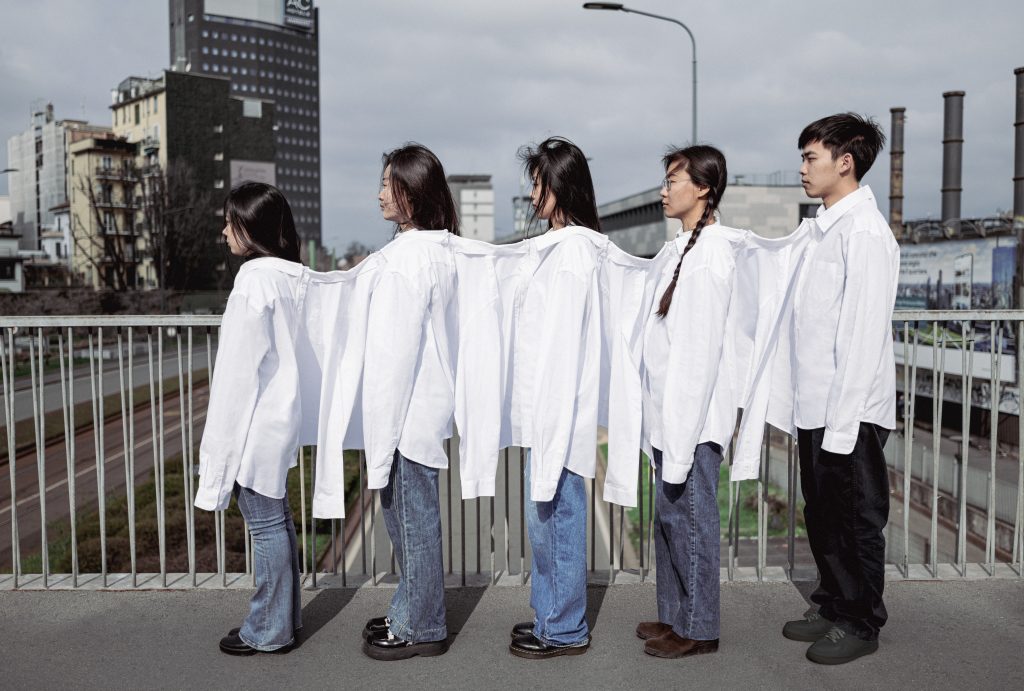The transformation and design of everyday objects.

In addition to the experiments with wearable constructs inspired by Ani Krikorian, this project explores a form of expression of the mundane found in the works of artists such as Franz Erhard Walther in Chapter 7. The portrayal of the everyday is a recurring theme in art, prompting a shift in perspective toward the mundane. Taking inspiration from the ubiquitous white shirt, often associated with white-collar professions requiring office work or specialized skills, it symbolizes the middle class defined by society. Utilizing the white shirt as a symbol, I’ve transformed it into contemporary armor, representing modernization
The concept of the bourgeoisie, first articulated by Aristotle, defines a class that satisfies lower-level physiological and safety needs and intermediate emotional and esteem needs but doesn’t reach the pursuit of higher-level self-actualization needs. Being part of the bourgeoisie essentially marks the pinnacle of ordinary life, with only self-actualization needs remaining. Society often uses economic criteria to judge the middle class, including income, occupation, and lifestyle standards. I use this symbolic representation in this artwork to depict a contemporary, replicated lifestyle, showcasing how the shirt connects to everyday life. Through the lens of connections, I contemplate how we create links with each other in the monotony of daily life. Do we stumble if we can’t keep up with others? What are the societal or personal expectations we hold? Walking and utilizing everyday objects, we explore the dynamics of status and distance among individuals (Figure 63).
Figure 63. White Shirts at Cavalcavia Bussa Photo credit: Y. Liu, March 9, 2024
In creating the Emotional Connection series, we return to the basic principles of participatory art, emphasizing the creation and experience of artworks not solely by the artist but also through the active engagement of the audience or participants. This art form encourages viewers to become part of the artwork, typically achieved through interaction, participation, and collaboration (Figure 64). The purpose of participatory art is to break the passive relationship between traditional artworks and audiences, encouraging deeper engagement and understanding of the artistic process by participants.

Therefore, we conducted experiments and exercises incorporating basic theatrical practices, including pair warm-ups and training for neutral walking and step consistency. Through repeated engagements in different environments and with various participants, we explored the distances and applications of these connections, delving into the nuances of human connections. The narrative emphasizes the often-overlooked essence of human connections amid societal concerns primarily focused on ecological and environmental issues. It highlights the dynamics of relationships and subtle shifts in distances, prompting contemplation on constructing meaningful connections in contemporary contexts. The exploration extends beyond physical and temporal dimensions, contributing to a deeper understanding of societal interactions.

